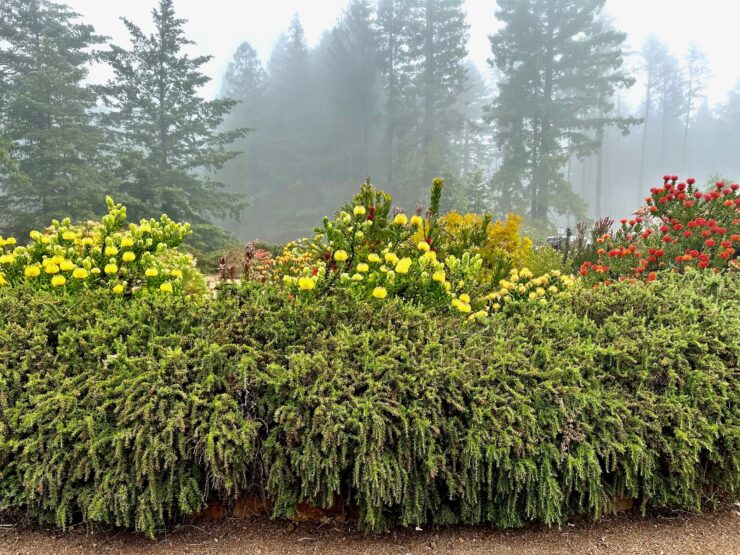The wines of Sonoma County are some of the best in the U.S. The wines, especially the Pinot Noirs and Chardonnays grown closest to the Pacific Ocean, are world-class. Compared to its near neighbor, Napa, Sonoma has maintained a more laid-back and friendly vibe.
Sonoma has its share of highly lauded and “prestige” wineries, like Williams Selyem, Hirsch, Peter Michael, and Ridge. The pioneering winemakers behind these producers have helped carve a niche in the market for Sonoma and its wines.
A recent educational tour of Sonoma, where I visited a couple of dozen wineries and winemakers, revealed the depth and breadth of the wine in this fruitful part of Northern California. It also showed the county’s deep agricultural roots.
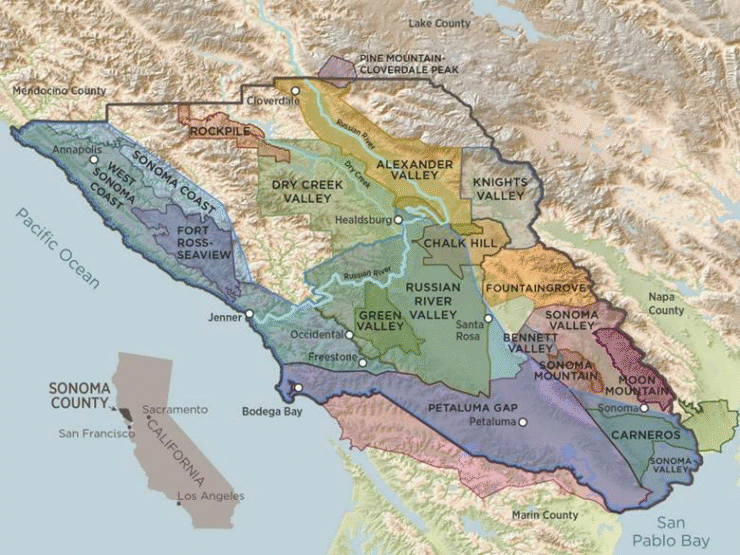
Sonoma’s Multi-Generational Family Farms and Newcomers
Sonoma County boasts dozens of multi-generational farming families carrying on the traditions of their forebears. Many are also changing with the times and carving out new territory in the wine industry. Newer farmers and wine producers have been drawn to the county for its rich and varied terroir.
Common among both old and new grape growers is a respect for the land. The pursuit of sustainable farming and winemaking practices exemplifies this. According to Clarissa Kruse, president and CEO of Sonoma County Winegrowers, 99 percent of Sonoma vineyards are certified sustainable by a third party.
Of the over 1,800 wine grape growers in Sonoma, about 95 percent are family-owned. Of these, the majority are under 100 acres, and 40 percent are under 20 acres.
Headed to California Wine Country? Check out this story about an avant-garde winery in Napa.
There are 19 American Viticulture Areas (AVAs) within Sonoma. Two additional AVAs – Sebastopol Hills and Pocket Peak – are pending approval with the Alcohol and Tobacco Tax and Trade Bureau (TTB).
According to Kruse, two of the defining characteristics of the county are its coastline, with its grape-loving fog, and the variety of soil types (30+), which is more than in all of France.
While there are 63,000 vineyard acres in Sonoma – an area larger than the state of Rhode Island – nearly 60 percent of the county is still in its natural state. Hence, it’s beautiful, verdant, and wild in places, making it a glorious destination for wine tasting and outdoor activities.
Honoring 100+ Years of Growing in Sonoma County
On this in-depth tour of Sonoma, I was honored to participate in a dinner with the Century Club of Sonoma County. This yearly event pays respect to some of the 20+ families that have been continuously growing in Sonoma for 100 years or more.
The Dutton family (seventh-generation farmers) hosted the event at their beautifully converted barn at Dutton Ranch. Other families included the Munselles, the Azevedos, and the Rafanellis, all fifth generation. The special honoree was octogenarian Nick Leras, whose family came from Greece and planted their first vineyard in Sonoma in 1918.
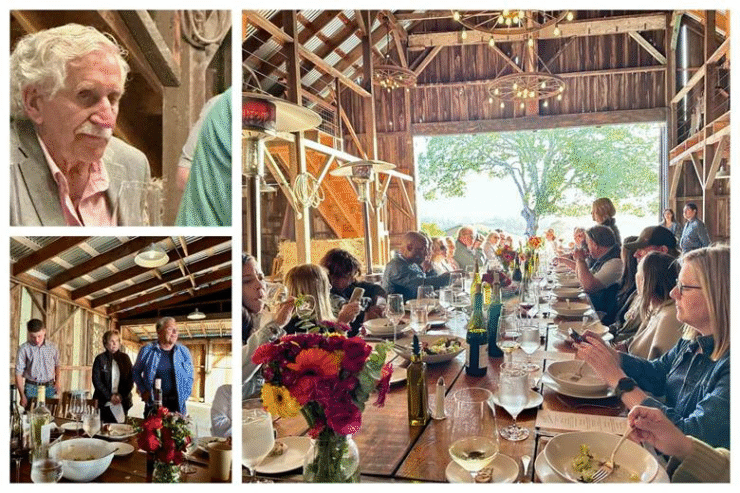
The Fog Rolls In
The Sonoma Coast AVA features some of the most spectacular vineyards and wines. The vines here respond well to the Pacific Ocean fog, which is ideal for growing Pinot Noir and Chardonnay.
Following are two wineries that captured my fancy while exploring the Sonoma County wine scene. Both are renowned for their coastal Pinot Noir and Chardonnay.
Fort Ross Seaview
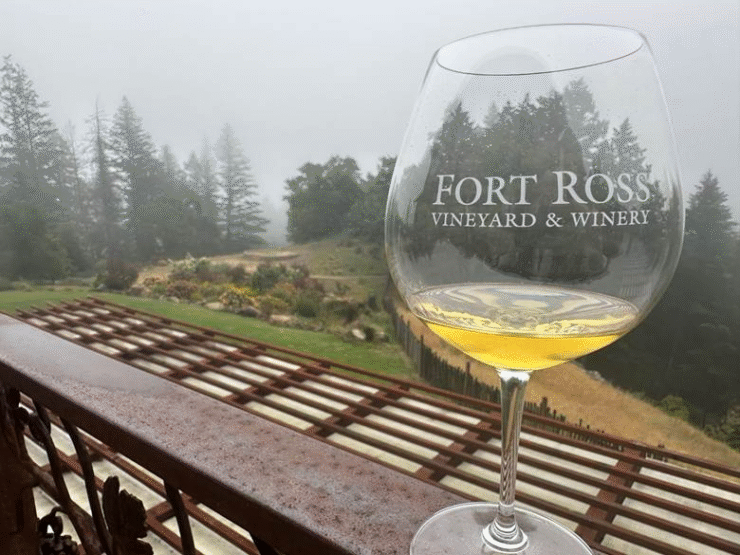
Just getting to Fort Ross Vineyard is a thrilling and picturesque experience. It’s a 65-mile drive north-northwest of San Francisco. As you drive along the dramatic Sonoma Coast past the town of Jenner, you begin to feel that you could get lost in the clouds. The coastline here is dramatic, majestic, remote, and very steep.
It’s easy to miss the right turn off the Coast Highway at Meyers Grade Road. If you do, you can pull into the next breathtaking viewing area and circle back (I speak from experience). The road takes you inland away from the ocean for a few miles before you come to the Fort Ross Vineyard tasting room, which is the only tasting room in the Fort Ross AVA. It’s also the vineyard closest to the Pacific Ocean in Northern California.
First, the Flowers
The first thing you will notice as you approach the tasting room is the abundance of lush flowers enveloping this charmingly rustic facility. There is a preponderance of Protea, a South African floral variety that blooms into colorful and exotic spiky blooms of varying colors.
These plants are not native to California, but they are native to the Fort Ross Vineyard owners, who hail from South Africa. Wine collectors Linda and Lester Schwartz came to the San Francisco Bay Area from South Africa in the 1970s. They discovered they loved the remoteness of the Sonoma Coast and purchased land. They also decided to plant a lot of Protea.
The Schwartzes’ decision to plant a vineyard was made despite the expert advice they received from a UC Davis professor. He warned that “nothing will grow” on the land. By “nothing,” he meant wine grapes. The professor in this case was wrong.
Nestled into the wooded land between 1,000- and 1,800-foot elevations are the Fort Ross-Seaview vineyards. The estate’s winemaker is Jeff Pisoni, who worked at Peter Michael and Bernardus, and also makes wine at his own family’s winery, Pisoni Vineyards.
A Foggy Day Tour
Pisoni led a tour of this property on an extremely foggy day in early June. The fog here is so thick that it seems like it’s raining. It was cold and wet … and wonderful.
The total acreage of the estate is 975 acres, with just 53 acres planted to vines. The vines are certified sustainable, which is hard to achieve in such wet conditions. All sprays used on the vines are organic, as is the compost.
The rest of the property has been left as is, with vast wooded areas and grasslands. The winery offers an hour-long guided hike on the estate among the vines, open spaces, and redwood groves, followed by a food and wine pairing in the tasting room.
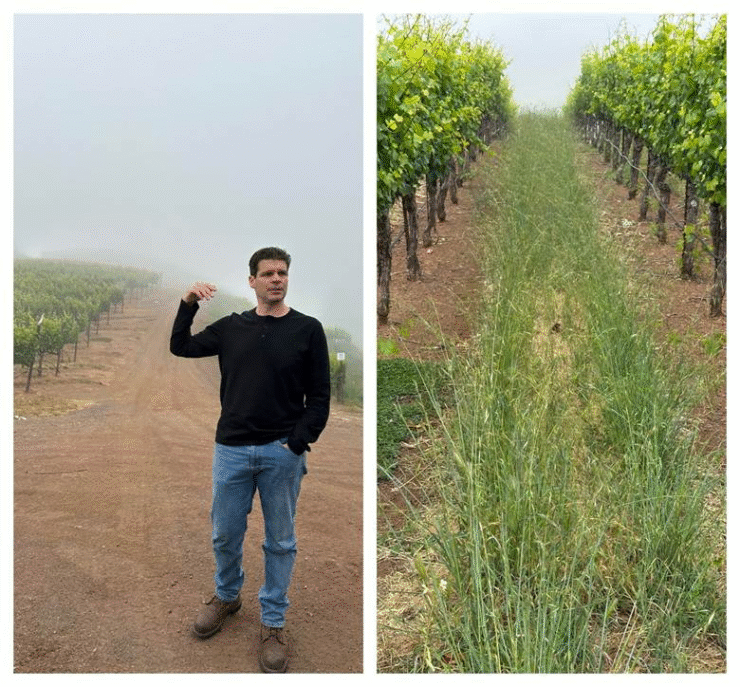
Fort Ross Wines
Pisoni joined Fort Ross in 2000, about a year after the vines were planted. While he calls 2000 a “nice year” for the vines, the 2024 vintage was the most abundant in 20 years. We sampled the Fort Ross 2024 Rosé of Pinot Noir. This light-colored Rosé has a pretty label featuring a Proteus flower. It tastes like strawberries with a hint of the nearby ocean, and it’s divine.
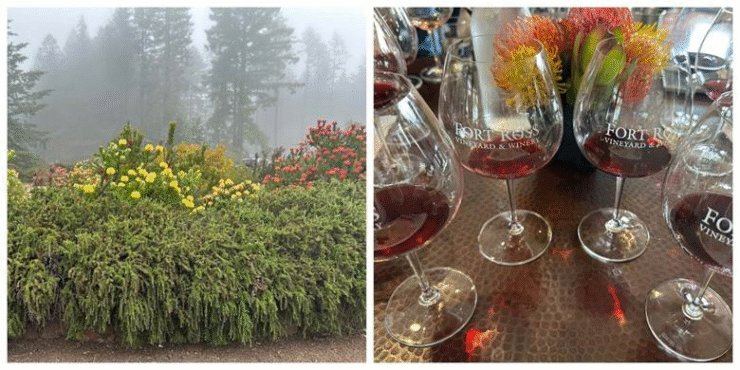
In addition to Pinot Noir and Chardonnay, Fort Ross also grows and makes Pinotage and Chenin Blanc. Pinotage, a grape created as a crossing of Pinot Noir and Cinsault, is South Africa’s most distinctive red grape variety. Chenin Blanc, a white grape that originated in the Loire Valley of France, also does very well in South Africa.
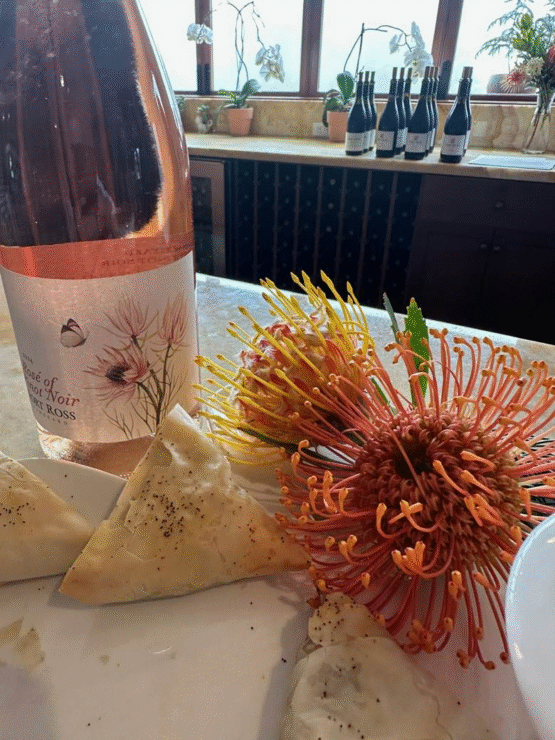
Pisoni explained that the vineyard is planted in 33 different 1.5-acre blocks. These blocks can be mixed and matched to make different versions of the Pinot Noirs and Chardonnays.
While the fog is undeniably evident, Pisoni says that it eventually burns off later in the day. This fog, along with the elevation, is a factor in the designation of the Fort Ross-Seaview AVA. While the vines enjoy the cooling effect of the mist, at elevations above 1,000 feet (that is, above the fog line), they also enjoy some hours of sunshine, allowing the grapes to ripen properly.
Fort Ross makes between 7,000 and 8,000 cases per year. Most wines are in the $30 to $50 range. Book a tasting and a food-and-wine pairing ahead of time.
Littorai or, Literally, “The Coast” Wines
Ted Lemon, the owner of Littorai, wants to know what the forest can tell him about regenerative farming. He also believes we can never go back to the way farming was in the 1700s.
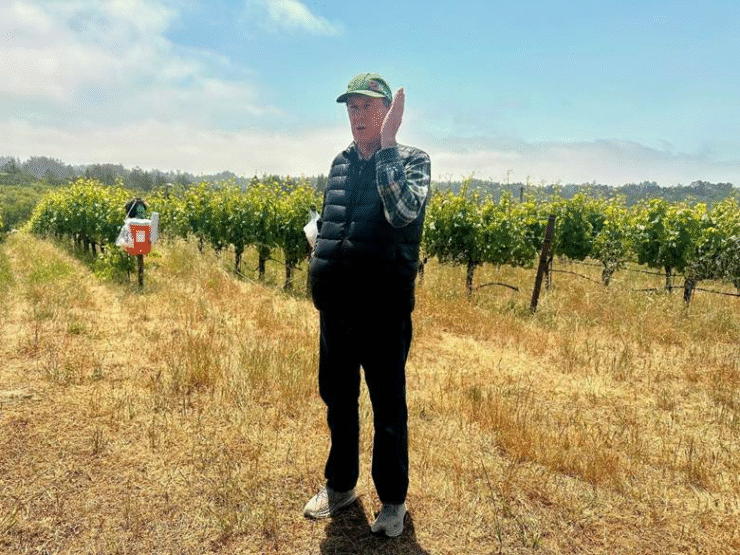
Lemon is a realist who considers himself a new world wine maker. However, he believes that if we don’t apply the wisdom of accumulated farming knowledge properly, we’re in trouble. He believes that every step taken by every person matters in the big scheme of things.
Standing in his vineyard and sampling two of his award-winning Pinot Noirs while soaking up his wine philosophy is a rare treat.
Coastal Influences Are Key
Lemon’s winery, Littorai, gets its name from the plural of the Latin word Littor, meaning “the coasts.” The name embraces the coastal influences that allow the growing of Pinot Noir and Chardonnay grapes in the area.
Lemon, an East Coaster by birth, was named Winemaker of the Year in 2010 by the San Francisco Chronicle. He has worked his way up in the wine business via stints in Burgundy, New Zealand, Oregon, and Napa. He’s worked making wine at many prestigious wineries around the world, known for their Pinot Noirs and Chardonnays. Among them are Domaine Georges Roumier and Domaine Dujac in Burgundy, France; Burn Cottage in New Zealand; and Archery Summit in Oregon. He was also a consulting winemaker at Franciscan Estate in Napa for 18 years. Lemon’s wife, Heidi, also worked at several Napa wineries, including Domaine Chandon and Stag’s Leap Wine Cellars.
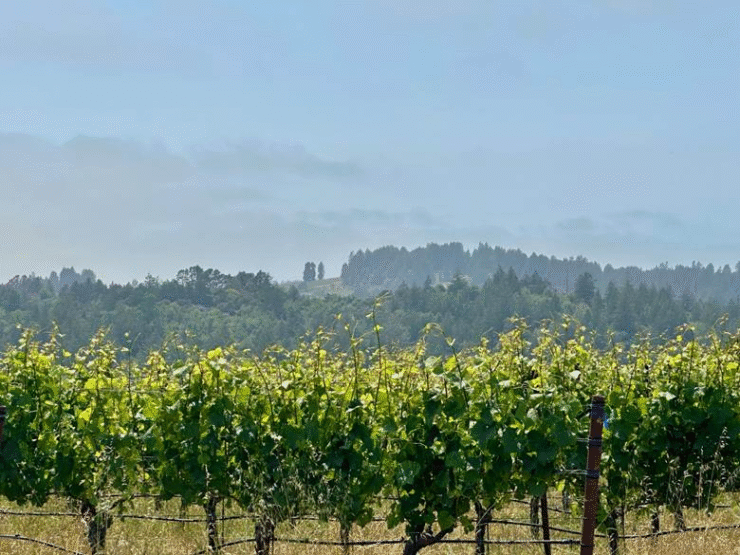
Ted and Heidi spent time searching for the perfect place to plant Pinot Noir and Chardonnay grapes. They eventually landed in the Sebastopol area of Sonoma, where they began their own wine story by purchasing grapes, then renting vines. In 2003, the Lemons purchased Gold Ridge Estate in the Sebastopol Hills of the Sonoma Coast AVA. They completed their winery in 2008.
Gold Ridge Estate
Gold Ridge Estate comprises 30 acres, situated at about 500 feet elevation, and is a self-sustaining farm. The farming is based on biodynamic principles, although Littorai does not have biodynamic certification. Much of the land is devoted to streams and forest, never to be developed. Another large portion is a working farm with animals like cows, sheep, chickens, and ducks (as well as a winery dog named Charlie). They also produce hay.
The farm was simply a grazing field for the animals for some time. It is now divided into 12 fields, with 4.5 acres planted with grape vines and another 2 acres planted with fruit trees. Littorai wine production is split 50-50 between estate grapes and grapes purchased from other growers. Lemon has been leasing vines long-term from several renowned producers, including Hirsch Vineyards.
After the Sunshine, Fog
Standing among the vines on a warm late spring afternoon allowed me to see the Pacific fog rolling in via the Petaluma Gap. This fog brings a cooling effect to the vines, which will enable them to “rest” and retain their acidity after a day growing in the warm sunshine.
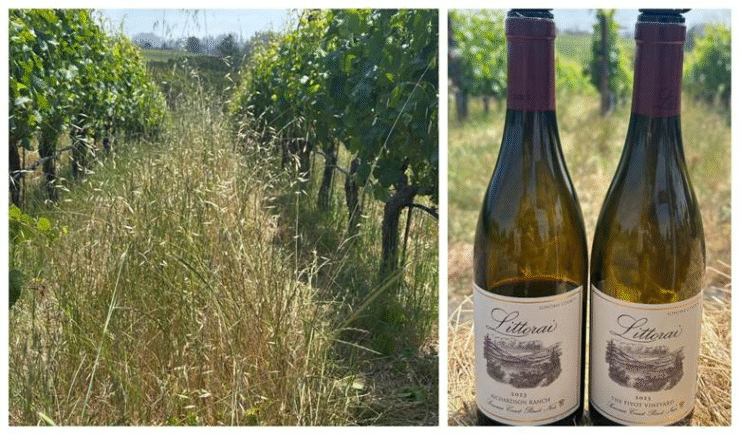
While in the field, talking with Ted, we tasted two of his highly acclaimed Pinot Noirs, both from the 2023 vintage. The first is sourced from Richardson Ranch, and the second from the Pivot Vineyard. These are both aged in 20 percent new oak and are fresh and bright Pinots, with notes of pomegranate, young cherries, and herbs.
Littorai wines are not easy to come by, as they produce them in small lots. They sell much of it directly to their private client list (you can request to join here) and distribute a small amount to retailers. Fifty percent of Littorai’s production goes to the export market.
If You Go
If your starting point for a trip up to Sonoma is San Francisco, it’s about a 55-mile drive north to the town of Sebastopol. This thriving tourist town is home to The Barlow, an open-air marketplace that brings together local chefs, winemakers, brewers, and artisans of all types who display and sell their local products.
There are numerous restaurants, wine bars, pubs, and hotels to choose from. A few I would recommend include:
- Kosta-Browne Winery
- Region wine bar
- The Fern Bar restaurant
- The Redwood wine and restaurant
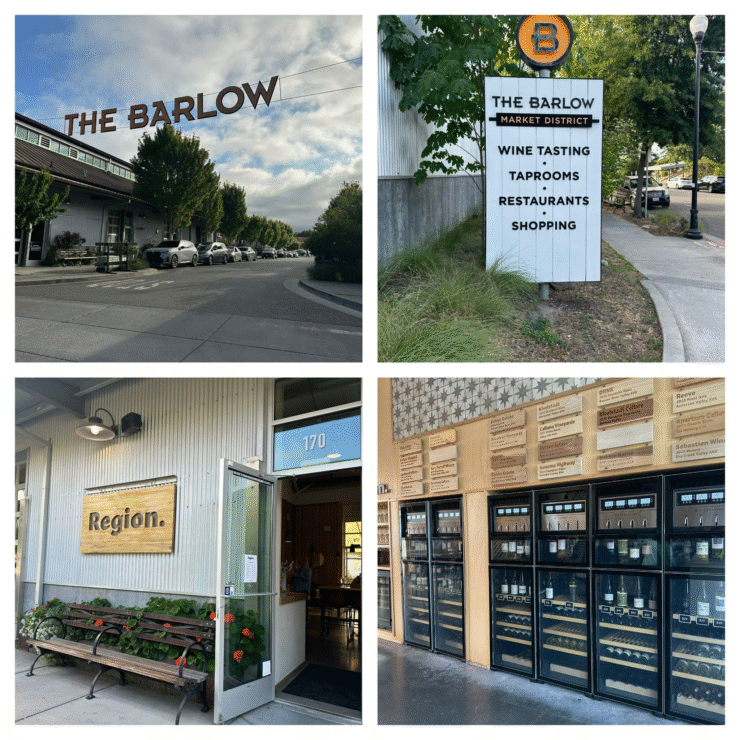
A special thank you to Fred Swan and his Wine Writers Education Tours and the Sonoma County Winegrowers, who sponsored the tour.
You might also enjoy:
- Copper Bear Wines: Napa Fruit and Arizona Roots
- Amador Showcases the “European Wines” of the Sierra Foothills
Terry Nozick is a Los Angeles-based food, wine, and travel writer whose blog is Truth ‘n Wine.

